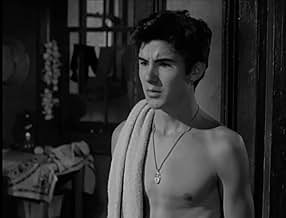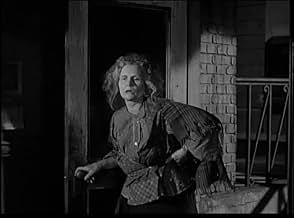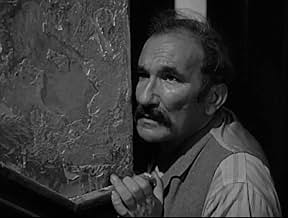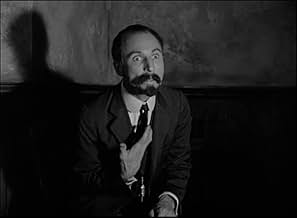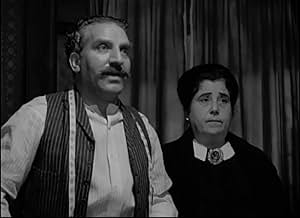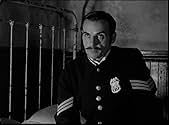Now grown-up, Johnny Columbo returns to New York from Italy having sworn a vendetta against the Black Hand who killed his father years earlier. Becoming romantically involved with a girl fro... Read allNow grown-up, Johnny Columbo returns to New York from Italy having sworn a vendetta against the Black Hand who killed his father years earlier. Becoming romantically involved with a girl from school and meeting up with an honest cop also fighting the gangs, Columbo starts to wond... Read allNow grown-up, Johnny Columbo returns to New York from Italy having sworn a vendetta against the Black Hand who killed his father years earlier. Becoming romantically involved with a girl from school and meeting up with an honest cop also fighting the gangs, Columbo starts to wonder if there may be legal ways to defeat them.
- Maria Columbo
- (as Eleonora Mendelssohn)
- Director
- Writers
- All cast & crew
- Production, box office & more at IMDbPro
Storyline
Did you know
- TriviaThis was originally set up as a Robert Taylor vehicle.
- Alternate versionsoriginal story about Lt. Petrosino,real NYC police officer, remade as Pay or Die with Ernest Borgnine
Yet it's interesting, for three main reasons. One is that the story itself simply isn't too bad. Unlike many of the Godfather-type epics, Italian immigrant life isn't romanticized. The settings are grungy. Families don't live in secluded splendor. If the plot isn't nearly as nuanced as more modern stories on the subject, neither does it falsify the nature of criminal groups. There are clearly good guys here, and clearly bad guys, and a couple of guys squeezed in the middle.
Two questions are raised that have little to do with the Black Hand. Few of the principal actors are Italian. Does it matter? Kelly, curly haired and wearing dark make up, looks the part, although he sounds like a Mid-Westerner rather than an Italian immigrant to New York. (He pronounces his Italian correctly, though.) J. Carrol Naish, an Irishman from New York, is also made to look swarthy and gives what is for him a modulated performance. The man specialized in ethnic universality. He played Arabs, Asiatic Indians, lots of Italians, and God know what else, except an Irishman. Like Lawrence Olivier, he had only one accent that seemed to fit all of his parts. Some years ago, Vanessa Redgrave, a virulent pro-Palestinian, played a Jewish violinist in a pretty decent TV movie -- "Playing for Time," I think was the title -- about survival in Theresenstadt. Whew! What a brouhaha! Imagine an anti-Zionist playing a Jew in a concentration camp! Before that, Freddie Prinz came in for a blistering because he played a Mexicano in "Chico and the Man," a TV series, and Prinz was half Hungarian and half Puerto Rican. Again, it seems to matter, but should it? Doesn't the essence of acting involve playing the part of someone else? Unless the portrayal is so far off the mark that it works only as parody, why should it matter to us? Reduced to the absurd, the argument would have us never playing anyone other than ourselves. The same logic would have us object to every performance on screen or stage, because the actors are pretending to be something that -- genetically and culturally -- they are not.
The second question, and the third thing about the movie that I found impressive, had to do with the sets. The production is studio bound. Large scale location shooting was only beginning in 1949. The sets are clearly artificial. But, although not as convincing as on-location shooting, the production is at least as suggestive, seeming a bit stylized and stylized in the right direction. Turn-of-the-century New York City poverty has rarely been so well captured. The head of the local Black Hand is arrested while taking a bath. He is in his cellar. (It's a definite "cellar," not a "basement"!) There is a single naked overhead light. The cellar walls seem made of large bricks hastily thrown together. The man is naked in a bathtub that has no running water. (He undoubtedly filled it with water from kettles warmed on the top of a coal burning range in the upstairs kitchen.) A goat stands placidly next to the tub, ignoring the intrusion of the cops. Now THAT is production design. Studio sets can be taken even further and still be effective. A scene in "Mystery of the Wax Museum" or "Horrors of same" has Phyllis Kirk being chased through turn-of-the-century New York streets by a deformed and murderous madman. The streets through which she runs and he shuffles bear the same resemblance to real streets that a schematic diagram does to the inside of a TV set. The apartment fronts look made of thin plywood. The windows -- all equally lighted with bland yellow -- are of identical size and all have their shades drawn, like glowing but blank and impenetrable eyes, suggesting there is no succor for the heroine behind any of them, only thin buttresses propping up the false fronts and a couple of lights strung by the grip. And of course, there are no pedestrians, there is no garbage in the gutters or the streets, let alone garbage cans, no vehicles, no nothing except those surrealistically empty streets. "The Black Hand" doesn't go this far, but is an effective suspension of realism and stylization. The scenes in "Naples" are almost overboard. The night-time streets of Italy are well enough done but Naish eats in a Neapolitan restaurant with a view overlooking a patently false bay. It's the kind of "staged authenticity" that the sociologist Dean MacCannell described. All that was needed, besides that blow up, would be a couple of fish nets and phony salamis and provolones hanging from the walls.
There are three kinds of phoniness here: (1) the plot that pits good against evil; (2) the substitution of non-Italian actors for Italian characters; and (3) the use of studio sound stages as substitutes for real locations. None of it matters. It's not a bad flick. Not very good -- no one could argue that -- but simply not bad. I enjoyed it anyway. I mean, in a way, its phoniness is emblematic of our own realities. Are you really everything you claim to be?
- rmax304823
- Aug 22, 2002
- Permalink
- How long is Black Hand?Powered by Alexa
Details
- Release date
- Country of origin
- Languages
- Also known as
- The Knife
- Filming locations
- Production company
- See more company credits at IMDbPro
- Runtime1 hour 32 minutes
- Color
- Aspect ratio
- 1.37 : 1
Contribute to this page


